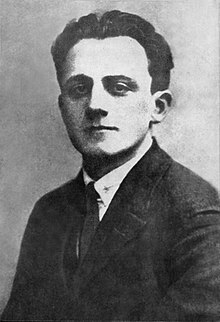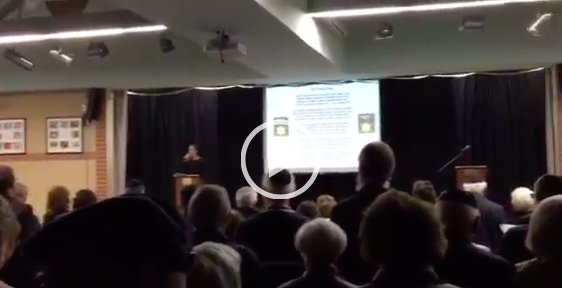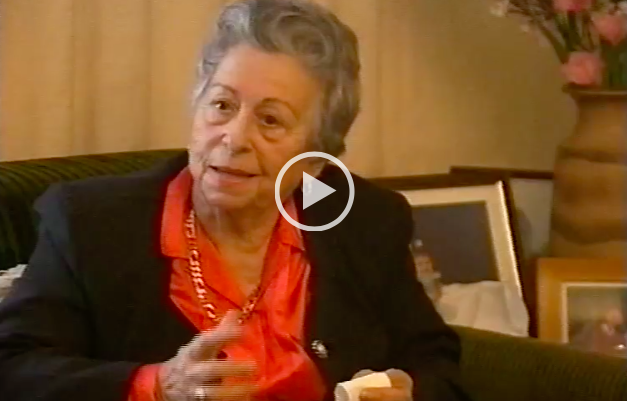If you were unable to attend the Holocaust Commemoration in Perth tonight, here is the programme:
From Wikipedia, the free encyclopedia
Hirsch Glick (1922 Vilna, Lithuania – 1944 Estonia) was a Jewish poet and partisan.
Glick was born in Vilna in 1922 (at the time a part of inter-war Poland). He began to write Yiddish poetry in his teens and became co-founder of Yungvald (Young Forest), a group of young Jewish poets. After the German assault on Soviet Union in 1941, Hirsh Glick was imprisoned in the Weiße Wache concentration camp and later transferred to Vilna Ghetto. Glick involved himself in the ghetto’s artistic community while simultaneously participating in the underground and took part in the 1942 ghetto uprising. In 1943 he wrote his most famous work, the song Zog nit keynmol, az du geyst dem letstn veg (זאג ניט קיינמאל, אז דו גייסט דעם לעצטן וועג) to the music of the soviet composer Dmitry Pokrass (1899-1978), which became the anthem of the Jewish partisan movement, and Shtil, di nakht iz oysgeshternt. He was inspired to write this work by news that arrived of the Warsaw Ghetto Uprising.Glick managed to flee when the ghetto was being liquidated in October 1943, but was re-captured. He was later deported to a concentration camp in Estonia. During his captivity he continued to compose songs and poems. In July 1944, with the Soviet Army approaching, Glick escaped. He was never heard from again, and was presumed captured and executed by the Germans (reportedly in August 1944).
Avril’s excellent address will be reported elsewhere.
Her message was powerful and meaningful, just as that of Emanuel Ringelblum’s during the dark days of the Warsaw Ghetto and still today, many decades after his death!
In the meantime, here is background information on Emanuel Ringelblum, at the core of Avril’s presentation.
From Wikipedia, the free encyclopedia

Emanuel Ringelblum.
Emanuel Ringelblum (November 21, 1900 – March 7, 1944) was a Polish-Jewish historian, politician and social worker, known for his Notes from the Warsaw Ghetto, Notes on the Refugees in Zbąszyn chronicling the deportation of Jews from the town of Zbąszyń, and the so-called Ringelblum’s Archives of the Warsaw Ghetto.
Before the war
He was born in Buchach, then in the Austro-Hungarian Empire, now in Ukraine. Ringelblum graduated from Warsaw University, where he completed his doctoral thesis in 1927 on the history of the Jews of Warsaw during the Middle Ages. Thereafter he taught history in Jewish schools and became a member of a political movement the “Left Po’alei Zion”.[1] He was known as a historian and a specialist in the field of the history of Polish Jews from the late Middle Ages to the 18th century. Before the Second World War Ringelblum worked for social organizations. Most notably, he helped Polish Jews expelled from Germany in 1938 and 1939.
World War II

Plaque in memory of around 40 Jews − among them Emanuel Ringelblum − and the Wolski family, at 77 Grójecka Street in Warsaw
During the war Ringelblum and his family were resettled to the Warsaw Ghetto. There he led a secret operation code-named Oyneg Shabbos(Yiddish for “Sabbath delight”). Together with numerous other Jewish writers, scientists and ordinary people, Ringelblum collected diaries, documents, commissioned papers, and preserved the posters and decrees that comprised the memory of the doomed community. Among approximately 25,000 sheets preserved there are also detailed descriptions of destruction of ghettos in other parts of occupied Poland, the Treblinka extermination camp, Chełmno extermination camp and a number of reports made by scientists conducting research on the effects of famine in the ghettos.
He was also one of the most active members of Żydowska Samopomoc Społeczna (Polish for Jewish Social Aid), an organisation established to help the starving people of the Warsaw Ghetto. On the eve of the ghetto’s destruction in the spring of 1943, when all seemed lost, the archive was placed in three milk cans and metal boxes. Parts were buried in the cellars of Warsaw buildings.
Shortly before the Warsaw Ghetto Uprising, Ringelblum and his family escaped from the Ghetto and found refuge outside of it. However, on 7 March 1944 their hiding place (prewar address 81 Grójecka Street) was discovered by the Gestapo; Ringelblum and his family were executed along with those who hid them.[2]
Ringelblum archives

One of the milk cans used to hide documents. From the Ringelblum “
Oyneg Shabbos” Archive
The fate of Ringelblum’s archives is only partially known. In September 1946 ten metal boxes were found in the ruins of Warsaw. In December 1950 in a cellar of another ruined house at 68 Nowolipki Street two additional milk cans were found containing more documents. Among them were copies of several underground newspapers, a narrative of deportations from the Warsaw Ghetto, and public notices by the Judenrat (the council of Jewish leaders), but also documents of ordinary life, concert invitations, milk coupons, and chocolate wrappers.
Despite repeated searches, the rest of the archive, including the third milk can, was never found. It is rumoured to be located beneath what is now the Chinese Embassy in Warsaw.
The Jewish Historical Institute in Warsaw is named for him.
Published works
- Polish-Jewish Relations during the Second World War (1974)
Here are a couple of other items of relevance, which were not part of tonight’s programme:
My life, my existence could be said to be against all odds. In fact, my life is the result of 3 miracles, – you see I am the grandson of 3 Holocaust survivors. After visiting and seeing the remains of the extermination and concentration camps in Poland, in April last year on the MOTL program, I began to grasp the massive scale of persecution and death that the Jews of Europe were confronted with over 70 years ago. I am now struck by the enormous reality of how my grandparents were among the minority…the minority who survived.
The experiences of my family are not unique or original. They are similar to the hundreds of thousands of other men women and children who came face to face with unprecedented evil that was the Holocaust. No, my family’s story is not original, but because it is the story of my family, it made my personal experience travelling to Poland all the more harrowing and emotional.
My grandma Renata, was just a little girl in Lithuania when the Nazis rose to power in Germany. In 1941 Renata’s father and grandfather were killed in Lithuania, she and her mother survived Kovno ghetto and Studdhof concentration camp which is northern Poland. My Grans life can be defined by a series of remarkable miracles. The first was when she survived the notorious selection process at Kovno Ghetto. She was with her gran in the group of Jews to the left. A family friend discretely removed her to be with her mother in the group to the right,… those destined to live. My grans own grandmother who remained in the group to the left was killed at a mass massacre site, in forest outside Kaunas, called the Ninth Fort. The second miracle in my Gran Renata’s s life was when she survived the Children’s action of the Kovno Ghetto when children were removed and deported to extermination camps in a bid to reduce the size of the ghetto. Terrified she hid for hours under a bed. The third miracle in her life was surviving Studdhof and the labour camps, which was through the sheer determination, sacrifice and love of her own mother. All this at the age of thirteen.
One of the most essential components of the MOTL program is the testimonials, where other students from the trip read out the story of their grandparents or other victims or survivors. The Lopuchowo forest is one of the many forests in Poland, where mass executions of Jews took place during the Nazi period. It was here that I read out the story of my grandmother Renata. I felt haunted and horrified to realise that in a forest not too dissimilar to this in Lithuania, Renata’s father and grandparents were killed. The enormity of this was quite overwhelming. I felt angry at the thought the suffering my Gran had to live through as a child. In spite of her suffering my grandmother Renata is the kindest gentle, caring and loving person.
My paternal grandfather George from Budapest spent his life during the war in a constant cycle of escaping from slave labour camps and being recaptured. He would come to escape from the Germans and Hungarians 6 times. Throughout his experiences George would look at a situation that was absurd or abnormal and to alleviate the tension would respond with humour. It is his sense of humour that, in part may have helped him to survive. He always felt that somehow he was born to survive and never gave up.
A year after his bar mitzvah, when he was 14 George’s father was taken away in July 1942 to the Russian front. Jews would be routinely taken away for slave labour by the right wing Hungarian government who were allied to the Nazis. George never saw his father again.
I read George’s story at Umschlagplatz just outside of the site of Warsaw ghetto, this is where they deported the Polish Jews in cattle carts to the various extermination camps of Poland. Whilst my Grandfather was not Polish I felt a sense of overwhelming sadness standing in such a place where people were separated from their loved ones and sent to their deaths.
Auschwitz Birkenau is of particular significance for me. My father’s mother Susie, who I never met was a prisoner at Auschwitz, and was the sole survivor of her family. Listening to her recorded testimonial I was haunted with her recollection of how the nazis forcibly removed Susie and her family from their home. Her father was denied his request to take with him a Kittel (A white linen robe that is used as a burial covering). The Nazis response to Susie’s father was “where you are going you will have no need for it”. As Susie and her family arrived at Auschwitz she was parted from her parents and brother. At selection, Susie and her little sister Anna were sent to the right, due to Susie telling an officer that she was 17 when she was only 14. Susie was then taken into a room where her hair was shaved. Upon asking a nazi officer where her parents and brother were, he took her to a window and pointed outside where a huge fire was burning. Later on Susie was separated from her sister Anna her only remaining relative, who was also sent to the gas chambers.
I read out my grandmother’s testimonial next to the cattle cart on display as an example of the carts that transported Hungarian Jews to Auschwitz Birkenau. I said Kaddish (the Jewish memorial prayer) for my grandmother’s family – her father, mother sister and brother who died there. I was overwhelmed by so many conflicting emotions, profound sadness, and wonderment at her miracle survival, and a feeling of both great pride that I could pay respects for her family. Being the first person in my immediate family to return to Auschwitz I really felt the sense of responsibility. This was the most moving and incredibly difficult thing I’ve ever done, which would not have been possible without the constant reassuring comfort and support of all others the MOTL trip.
In Poland there was death at every corner. I began to learn and fully appreciate and value the sanctity of life. Israel was like a breath of fresh air after the oppressive sadness and emptiness of Poland. We took part in the euphoric celebration of Israel’s Independence Day and the celebration of all that Israel signifies. Israel is the new State for all Jews, and all Israelis. Israel represents life, vibrancy and the future.
The MOTL journey with my peers has ignited a torch of remembrance, to remember my grandparents’ suffering, and to forever remember and honour their family members and countless others who were killed. It has taught me an understanding, appreciation and pride in my Jewish heritage and roots. I have learned the dangers of discrimination and prejudice and the importance of tolerance and equality. I feel stronger, more resilient and enriched because of this unique experience.

















































































































































































































































































